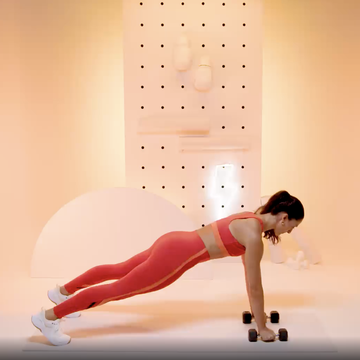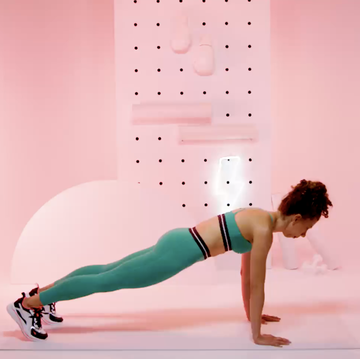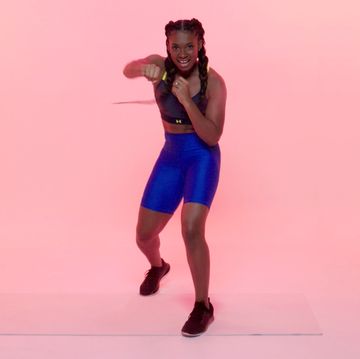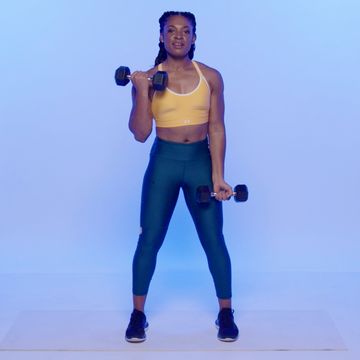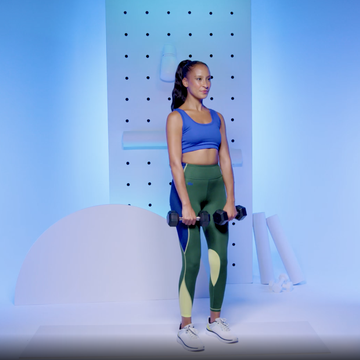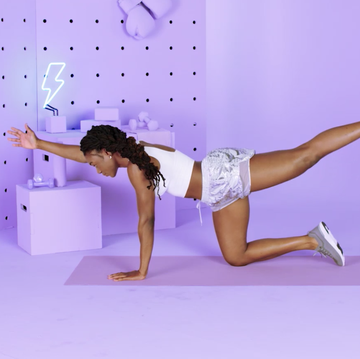These Are The Best Rear Delt Exercises For Sculpted Shoulders, According To A Trainer
This muscle group does way more than you think.
I love an upper-body workout. I'm all about biceps and triceps exercises, and maybe some back moves. But my go-to arm routine was missing a major muscle group that (unfortunately) often goes unnoticed: rear deltoids. You may not see them, but the back of your shoulders deserve some love.
“The rear delts (known as the posterior deltoids) are the muscles on the backside of the shoulders,” says Macy Pruett, CPT, a certified personal trainer and the founder of Fittest Core. “They sit on the back part of each shoulder muscle and begin on the spine of the shoulder blade and insert on the humerus, or upper arm bone.”
Meet the expert: Macy Pruett, CPT, is a certified personal trainer and the founder of Fittest Core. Kelly Bryant, CPT, RYT, is a certified personal trainer and registered yoga teacher who is a coach on training app Future.
You can consider rear delts the best supporting actor of the upper bod. First and foremost, the rear delts help stabilize the shoulders and are key players in *all* shoulder movement. "The rear delt is an important and multifaceted muscle that plays a few roles," says Kelly Bryant, CPT, RYT, Future training app coach. "It helps to lift the arm out, to externally rotate, and to stabilize the movement of other muscles of the arm and back."
For example, rear delts help lift the arm when doing a lateral raise or a jumping jack and it helps pin the upper arm in place when doing a bicep curl, according to Bryant. "Most of all, it plays a big supporting role in all upper body pulling exercises, like rows," says Bryant. "We need it for functional movements like yanking on the dog leash or picking up our kids. Without strong rear delts, we can see a lot more wear and tear on the smaller muscles of the rotator cuff."
And, this muscle is working when you're just sitting around. “Rear delts help you maintain proper posture by working alongside the muscles in the back to prevent the shoulders from hunching, while also assisting in extending and externally rotating the shoulders,” says Pruett. “It’s important to strengthen the rear delts to maintain good posture, which directly impacts the body’s overall health.” I don't know about you, but I just sat up a bit straighter.
Tips For Strengthening The Rear Delts
Start with the most effective rear delt exercises (coming up in a sec). Then, follow these trainer tips to get the most out of the moves:
- Keep your mind on the muscles. "It's important to understand with most muscles, but especially those of the shoulder and upper back, our awareness and intention plays a big role in what muscles are most activated," says Bryant. "For example, when doing a row or a back fly, you can focus more on the muscles of the back of the shoulder (like the rear delt) or you can focus more on the muscles between the shoulder blade and the spine. Bring your attention to using whichever muscle you want to target."
- Feel them out. If you can, try to touch the rear delt with the opposite arm while it's working. "You should feel the muscles flex on the back of the shoulder," says Bryant. That's when you know you're on target.
- Opt for lighter weights. "Keep in mind that the heavier you're working, the more you will need to use the large muscles like the rhomboids and traps," says Bryant. "When working lighter or with bands, you'll be able to target the rear delt more."
- Work them two to three times a week. If you want to build muscle, include rear delt exercises three times a week. Training the rear delts twice a week is sufficient for maintaining strength.
8 Best Rear Delt Exercises
Time: 15 minutes | Equipment: dumbbells, resistance band | Good for: rear delts, shoulders, upper back
Instructions: Choose four moves below. For each exercise, do the designated reps and continue to the next move. Repeat for three rounds total.
Andi Breitowich is a Chicago-based writer and graduate student at Northwestern Medill. She’s a mass consumer of social media and cares about women’s rights, holistic wellness, and non-stigmatizing reproductive care. As a former collegiate pole vaulter, she has a love for all things fitness and is currently obsessed with Peloton Tread workouts and hot yoga.
Watch Next


A 15-Minute Arm Workout, Without ANY Weights
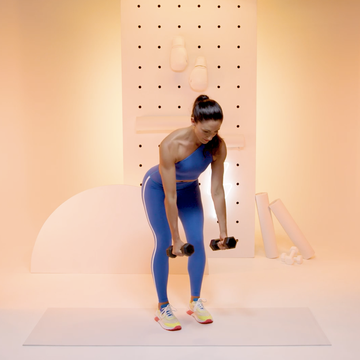
These 10 Moves Zap Lower Back Pain
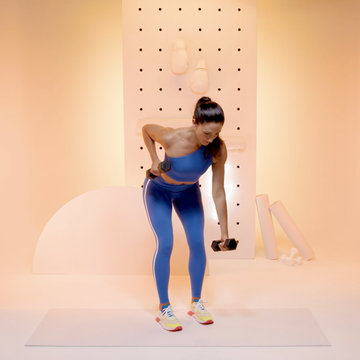
10 Exercises To Make Your Back And Biceps Burn
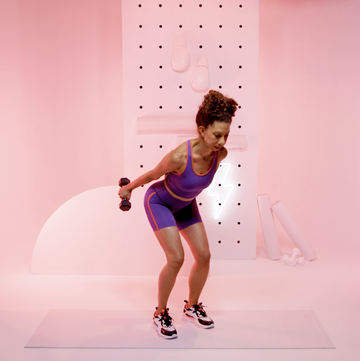
16 Best Triceps Exercises For Visibly Strong Arms









